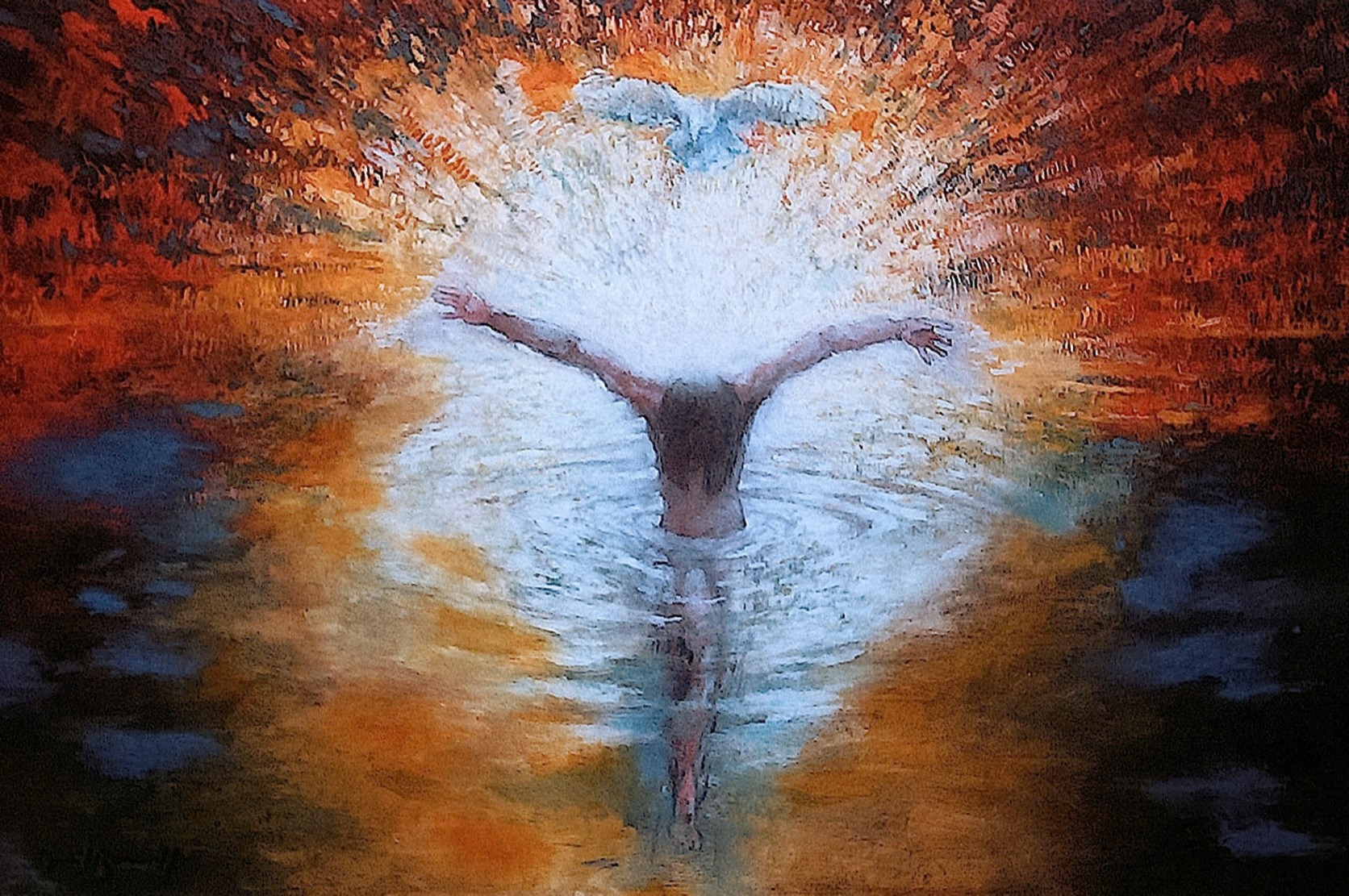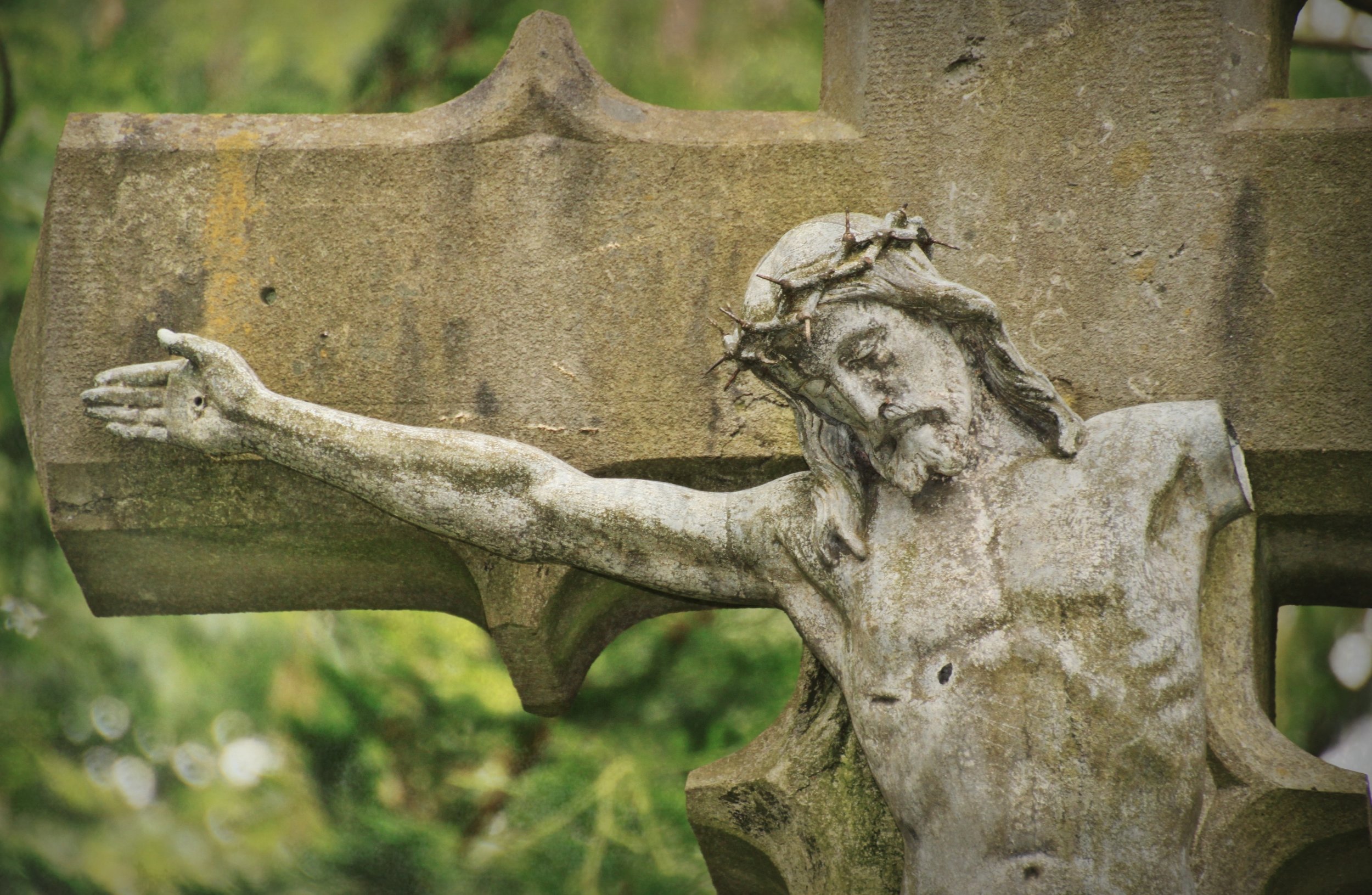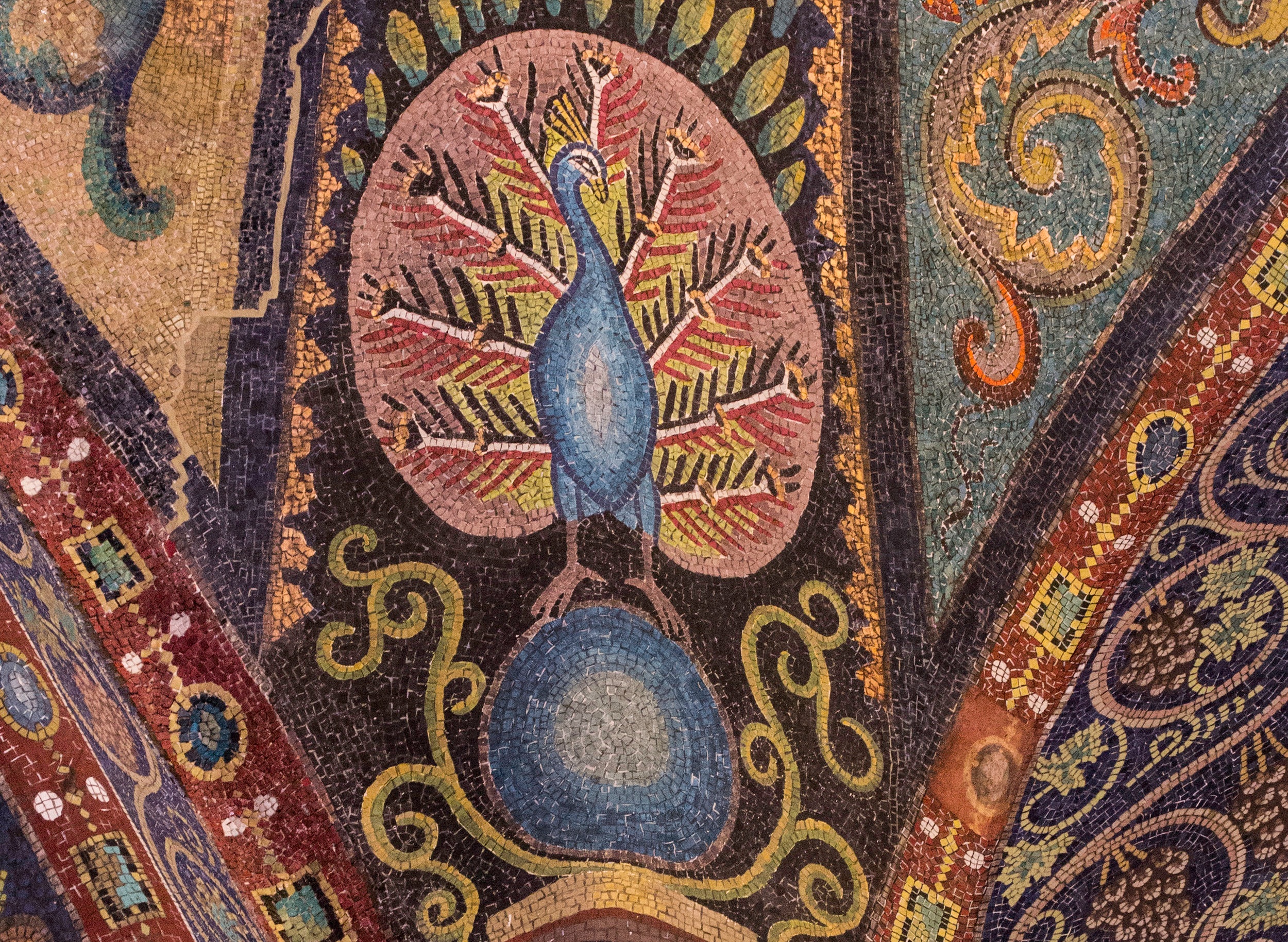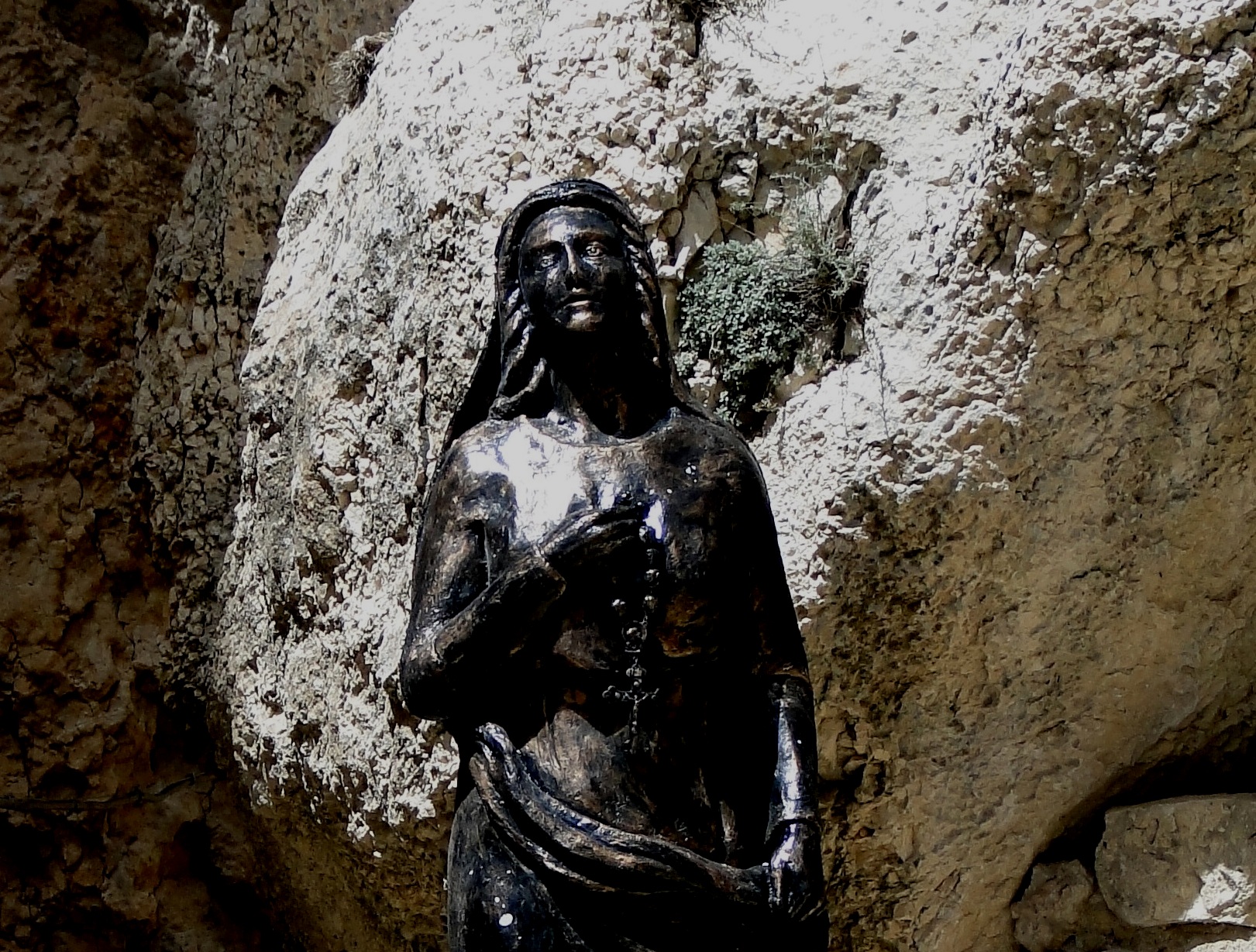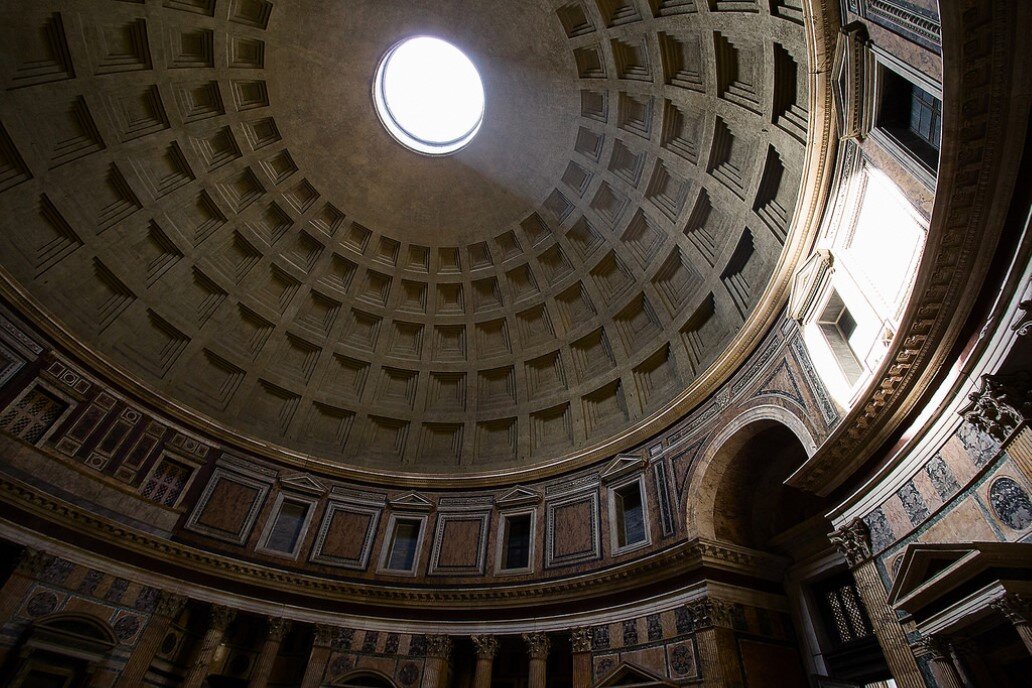The Resurrection of Jesus
Its Historicity and Meaning
Photograph: This mosaic is from the cathedral of Saint Vitale in Ravenna, Italy. The peacock was an early Christian symbol because the peacock sheds it old feathers every year and grows newer, brighter ones. This change was taken as a symbol of exchanging the mortal, fallen body for an immortal, perfected one. Photo credit: Father Lawrence Lew, O.P. | CC2.0, Flickr.
Introduction
Did Jesus rise physically from the tomb? How could we know such a thing, historically? And if he did, why should we care?
The Resurrection of Jesus: Its Meaning
The Healing of Human Nature in Jesus
A 30 minute video of a message given to students at Boston College, Nov 15, 2013. This message is rooted in the story of Jesus going through his baptism and wilderness temptation, in Matthew 3:13 - 4:11, reflecting his commitment to fix and fulfill his human nature by going all the way through his faithful life, death, and resurrection, in order to share himself with us by his Spirit.
Jesus’ Heart Transplant. Video of a message on Ezekiel 36:22 - 36 given by Mako Nagasawa to Highrock Brookline Church in Brookline, Massachusetts, on March 19, 2023. Message starts at the 36:25 minute mark, and the link will take you there, on YouTube. The message has an abundance of quotations and stories from Jewish sources, which was appropriate given Ezekiel being part of the Hebrew Bible and describing the plight of Israel, and also Brookline, MA having a large Jewish population.
Images of God in a Broken World
The following three messages were given at a weekend retreat. Images of God in a Broken World is the first; it explains why, in a broken world, we get the impression that if there is a “god,” that “god” is evil, at least partially. Jesus is the Image of God is the second; it is an explanation of Colossians 1:15 - 20, how Jesus is the accurate and perfect image of God despite our broken world, because he healed human nature in himself via his life, death, and resurrection. In Jesus, We Are God’s Image Bearers is the third; it is from Colossians 3:5 - 4:6, about how Jesus renews the image of God in us by his Spirit, to share God's goodness in a broken world.
God's Response to Human Evil: The Faithfulness of Jesus
A written message from Romans 3:21 - 26 about how Jesus’ faithfulness as a human being reflects and expresses the faithfulness of God to His promises to Israel, to bring about a healed human heart.
God's Victory Over Human Evil in Jesus
A written message from Romans 6:1 - 11 about how Jesus’ death and resurrection was the way he triumphed over the corruption of sin in the human nature he took on, and how we die and rise with Jesus to share in that victory.
Notes and messages on Paul's first letter to the Corinthians.
The Holy Spirit: An Introduction, Three Aspects of Salvation (and ppts)
In the Christian vision, “salvation” is defined as from three things: from God letting go, or “giving over,” of people to their own choices; from the devil and the powers; from the corruption of sin in our human nature. Jesus saves human nature in himself in all three senses, and shares his Spirit with us to save us as well.
The Trinity: Can Other Gods Be Personally Known?
Jesus' resurrection confirms that God is a Triune being. That is because, to be knowable, God must be transcendent (Father), immanent (Son), and the link between them (Holy Spirit). Also, to be the lover and redeemer of humanity, God must be wholly other than us (Father), who becomes one of us (incarnate Son), to become one with us (Holy Spirit).
More messages and reflections on the centrality of Jesus to Christian faith and Scripture
Human Dignity: Does Every Individual Matter?
Jesus’ resurrection is evidence that God offers the healing of human nature to everyone, via our human partnership, which means that the Christian God upholds the human dignity of each person.
Evil and the Christian God and Theology of Atonement
This paper explores how the character of God drives the type of story one lives in, and the type of atonement required to be consistent. Although penal substitutionary atonement makes God complicit with human evil, medical substitutionary atonement understands God as giving God’s whole self to undo human evil in human nature in a loving way: with our partnership. This means God is wholly good and loving, without being actively or passively evil. This means that the Christian story is truly a happy ending story, where good triumphs over evil without becoming evil itself.
This is a shorter version of the paper above.
What Are You Waiting For? Jewish and Christian Views of the Messiah
Slides of a presentation. This presentation explores the historical hopes of Israel in Second Temple Judaism, under the Roman Empire. It also examines Jewish military messianic movements from 163 BCE - 135 CE, which were very frequent, since many Jews had revolutionary aspirations. We consider how Jews had four main options of strong vs. weak identification with Judaism and strong vs. weak assimilation with Rome. We position Jesus and his followers as a “new temple” movement that extended the hopes of Israel into a messianic peace movement.
Stories and Spirituality: Jesus’ Resurrection and How the "God" Engages Human Evil
A one page chart comparing views of God and human evil. God could role model inner peace, or change human nature as one of us, or give us better laws. The chart compares how the deity in each category interacts with concepts of good and evil, whether the deity can touch humanity, how the deity helps us deal with human evil, and whether the deity will heal the world.
Stories and Social Consequences: Jesus’ Resurrection and Comparison with Islam and Mohammed
A one page chart. In the pattern of biblical heroes, God’s messenger is first rejected by the people – because of their resistance – and then vindicated by God and believed. But the details matter. This chart explores the pattern in both Christian and Muslim understandings. What resurrection is to Jesus, military victory is to Mohammed. Several questions must be discussed: How does this shape ethics? What other factors in these traditions steer us from violence? What really happened?
Stories and Social Consequences: Jesus’ Resurrection and Comparison with Atheism and Hinduism
A one page chart comparing stories. Classical Indian and Greek stories reflect a circular, reincarnation paradigm. Christianity tells a story of a good God who heals human evil by becoming one of us, then one with us. Atheism tells a story using the Second Law of Thermodynamics where the universe will eventually become cold and dead.
Stories and Spirituality: About How the God Contacts Us
A one page chart comparing paradigms about whether the deity contacts humanity and how. The default full contact view says the deity has absolutely no moral problem contacting human nature. Christian faith says the deity has only one main point of contact with human nature: in the person of Jesus. Islam says the deity cannot contact human nature because the divine is transcendent and also because the human is too unclean.
The Role of Jesus in Revolution and the Pursuit of Justice
A written message, graphics included, on how Jesus inspired twentieth-century non-violent resistance movements around the world, and why. Spotlights Tolstoy in Russia; Gandhi in South Africa and India; Ahn Chang-ho in Korea; the Civil Rights Movement in the U.S.; the Filipino People Power Revolution; Solidarity in Poland; the Velvet Revolution in Czechoslovakia; the Truth and Reconciliation Commission in South Africa; the Women’s Movement and Liberia’s Civil War. This is a shining thread of moral clarity, courage, and hope during humanity’s bloodiest century. A 15 - 20 minute read.
A written message and slides on how Jesus brought about a radical change to human history. Christian faith brought about dramatic improvements in health care and hospitals, abolition, education and schools, science and technology, criminal justice reform, and beauty and the arts. A 15 - 20 minute read.
Why Do Neo-Cons and Secular Liberals Have a Messianic Complex?
Both visions of the world are parodies of the Jesus story. Jesus’ resurrection means that a new humanity is available for all humanity. It signifies a human victory over evil that is internal to us. Neo-cons and secular liberals live in stories that are messianic parodies. Neo-cons emphasize a human victory over political, economic, and cultural “evils,” which are external to us, and therefore attempt to put democracy in Iraq. Secular liberals emphasize a human victory over oppression, inhibition, and tradition, which are external to us, and therefore attempt to weaken religious conviction in other countries in favor of expressive individualism.
The Conflict of Messianic Stories (chart)
This chart compares the Christian story with other parodies of the messianic storyline.
The Resurrection of Jesus: Its Historicity
The Resurrection of Jesus: Did the Four Gospels Record the Truth?
This paper examines the New Testament documents and answers various historical questions. How was it transmitted? How historically reliable is it? Would people in a Greco-Roman context invent the idea of Jesus’ resurrection, and succeed in spreading it? Would people in a Jewish context invent the idea of Jesus’ resurrection, and succeed in spreading it? Do the Gospel narratives about Jesus’ resurrection tell one story? Was the empty tomb of Jesus a historical fact? Were the appearances of the resurrected Jesus hallucinations or real? A 30 minute read.
The Resurrection of Jesus: Did the Four Gospels Record the Truth?
This paper is a shorter version of the one above.
The Resurrection of Jesus: Did the Hebrew Scriptures Foresee a Risen Messiah?
This paper analyzes various passages of the Hebrew Bible, from the three major portions: Torah, Prophets, and Writings. It explains how they are interrelated, and based on the conviction of Genesis 1 that God made the creation good, and is committed to the creation. Thus, God made human bodies good, and is committed to human bodies, not simply human souls.
The Resurrection of Jesus: Was It a Jewish Invention?
Slides to a presentation exploring the historical and sociological context of Second Temple Judaism and the historical period of Jesus of Nazareth. The presentation demonstrates how Jews at the time expected a military messiah and a political liberation of Israel. The implications include that Jesus had to honor and affirm the biblical passages and Jewish hopes, even while arguing for a truer interpretation of his mission and Israel’s mission.
The Resurrection of Jesus: Was It a Greco-Roman Invention?
Slides to a presentation examining the Hellenistic vs. Hebraic views of body and soul, material and spiritual. The argument is that the four Gospels emerged from a strongly Jewish conviction about the goodness of the body and the material world, and the unity between the body and soul, as well as the material and spiritual aspects of the cosmos. The gnostic Gospels of Thomas and Judas, by contrast, demonstrate a desire to Hellenize Jesus and the claim of bodily resurrection, by transposing it into something else.
The Resurrection of Jesus: Was It a Legend that Developed Over Time?
Slides to a presentation examining the claim — at one time held by New Testament scholar Bart Herman — that the New Testament literature reveal a “growth of legend” over the course of a few decades. This theory holds that Jesus was “spiritually raised” in his disciples’ hearts, which then became a claim to be bodily raised from the tomb, decorated with legendary embellishments in the four Gospels. This presentation challenges this view on literary, historical, and sociological grounds. The argument incorporates the previous material linked above, that the story about Jesus’ resurrection could not have been invented in a Jewish context, nor a Greco-Roman context.
Books and Articles on the Resurrection of Jesus: Its Historicity
Dr. Simon Greenleaf, Testimony of the Evangelists A founder of Harvard Law School explains the journey of investigation that led him to Jesus
Gary Habermas, The Resurrection of Jesus: A Rational Inquiry (Dissertation, 1976)
N.T. Wright, The Resurrection as a Historical Problem. Sewanee Theological Review, 1988. Wright examines the use of resurrection language in Second-Temple Judaism
N.T. Wright, Jesus' Resurrection and Christian Origins. Gregorianum, 2002. Wright surveys the first century Jewish options from a historical perspective
N.T. Wright, Resurrection: From Theology to Music and Back Again. Originally published in Jeremy Begbie, Sounding the Depths, 2002. A touching reflection on how we know things
N.T. Wright, The New Testament and the People of God. Fortress Press | Amazon page, Feb 1992.
N.T. Wright, Jesus and the Victory of God. Fortress Press | Amazon page, Aug 1997.
N.T. Wright, The Resurrection of the Son of God. Fortress Press | Amazon page, Mar 2003.
N.T. Wright, Surprised by Hope: Rethinking Heaven, the Resurrection, and the Mission of the Church. Fortress Press | Amazon page, Feb 2008. N.T. Wright, Surprised by Hope. Episcopal Church of the Good Shepherd, 2013. A six part video series based on the book.
Peter J. Williams, Eyewitnesses to Jesus? New Evidence for the Authenticity of the Gospels. Veritas Forum, Apr 2012.
Gary Habermas, The Resurrection Argument That Changed a Generation of Scholars. Veritas Forum, Nov 2012.
Michael Bird, How God Became Jesus: Bart Ehrman Gets It Wrong. ABC News, Apr 16, 2014. And a very funny moment in Stephen Colbert, Interview with Bart Ehrman. Colbert Report, Apr 9, 2009.
Molly Worthen, How a History Professor Changed Her Mind About the Resurrection | Molly Worthen at Texas A&M. Veritas Forum, May 7, 2024. Worthen read N.T. Wright’s work on the historical Israel and historical Jesus.







